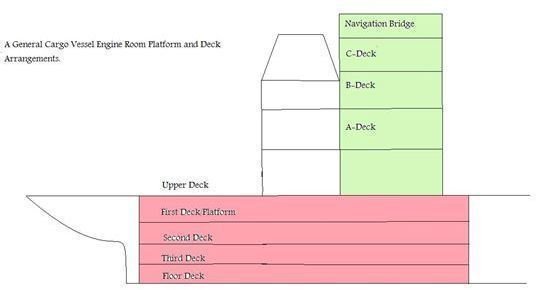I Learnt from That - Bacteria causes Engine Room Fire
Introduction
Fire on board a ship is the last thing which everyone dreams about. Recent generation technologies and automation have eliminated the risk of fire to a great extent. In spite, if the ship is under fire, a combination of equipment extinguishes them without any human assistance. But no one can be 100% sure that there will be no fire on board a ship. A ship, which is completely surrounded by water, cannot use this enormous resource to extinguish the fire. It is because of the simple reason that, as more and more water is added on a ship, it starts to sink. Here is an incident, which happened on board, and kept the crew running around for the cause of a fire which broke out.
The Incident
The incident happened in the engine room, when the Chief Engineer was taking his routine regular rounds. There was a garbage bin located on the 1st deck, kept well covered with its lid. As the Chief Engineer was nearing the bin, he witnessed something abnormal with the bin. As he came near, he found smoke coming out of the bin. As he opened the lid, due to the ingress of air, the fire broke out. He immediately raised the alarm and took a nearby foam extinguisher and extinguished it. The fire was very small one and thus was put out very easily. But the issue was how did the bin catch fire? He suspected the other engineers and engine crew as they might have dropped an unquenched cigarette butt. As he enquired, to his astonishment, none were smokers. As a next step, the Chief Engineer immediately informed the Master about the incident. But nobody could find the reason for the fire.
The Investigation
The Chief Engineer asked one of the engine crew regarding the contents of the bin. The crew member said that it was a practice to dump condensed milk packs, bread, oily rags, and cotton wastes. At the end of the day, the bin was emptied and the contents were incinerated the next day. The Master informed Management regarding the incident, and Management decided to send samples to the laboratory ashore.
It took nearly 45 days for the lab to come up with the reason for the fire. The entire lot was divided into 25 to 30 equal samples, with each kept at a certain temperature to observe its behavior. The samples which were kept at a temperature of 20 to 30 degree Celsius (68 to 86 F) did not not show any considerable change in its behavior. But the samples which were kept at 40 degrees (104 F) and above showed a strange behavior. Even after the heating element for the sample was turned off, the temperature was shooting up rapidly to more than 90 degree Celsius (194 F). Later upon testing, it was found that the steep increase in temperature was due to a kind of bacteria called “thermophilic bacteria”.
The thermophilic bacteria grow with liberation of heat at the right atmospheric conditions. It requires a hot and humid atmosphere to multiply. As they multiply, they liberate heat, and thus the oily cotton rag which was inside the bin caught fire.
Auto ignition temperature of oily cotton rags is 120 degree Celsius (248 F). Oily cotton rags have greater affinity to self-heating/spontaneous combustion. As the bacteria multiply, they liberate heat, which is sufficient enough to reach the auto ignition temperature of oily cotton rags.
This was sent to the company and a caution message was sent to all ships regarding the incident.
I Learned from That!
Ships must comply with garbage regulations and shipboard garbage management plans. It has always been a standard practice to segregate garbage, for example oily rags in a separate bin, food waste, metal scraps, ash, batteries, etc. assigned to different bins and color coded. This vessel did not have a garbage management plan, and no efforts were taken to implement a garbage management policy.
